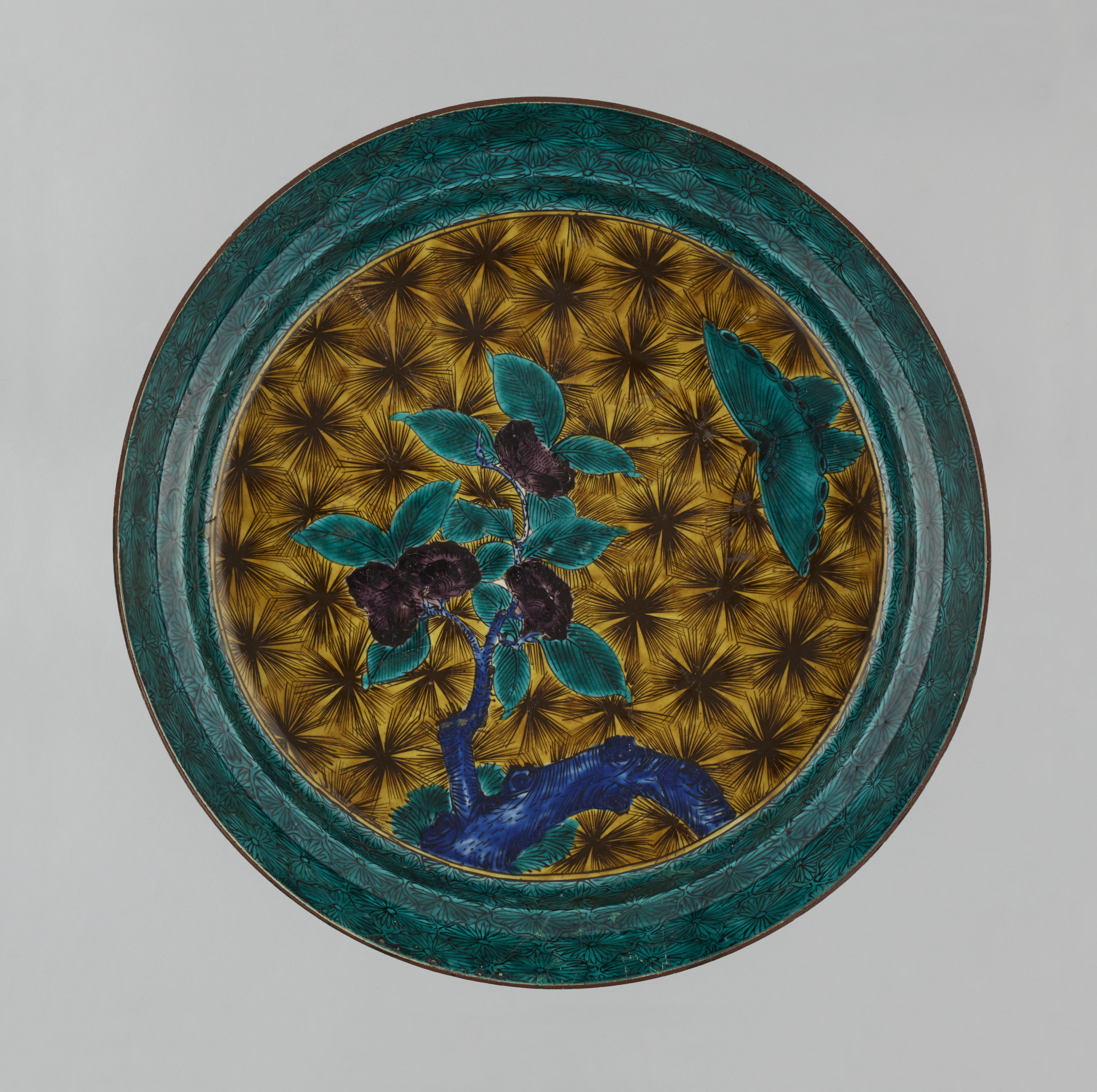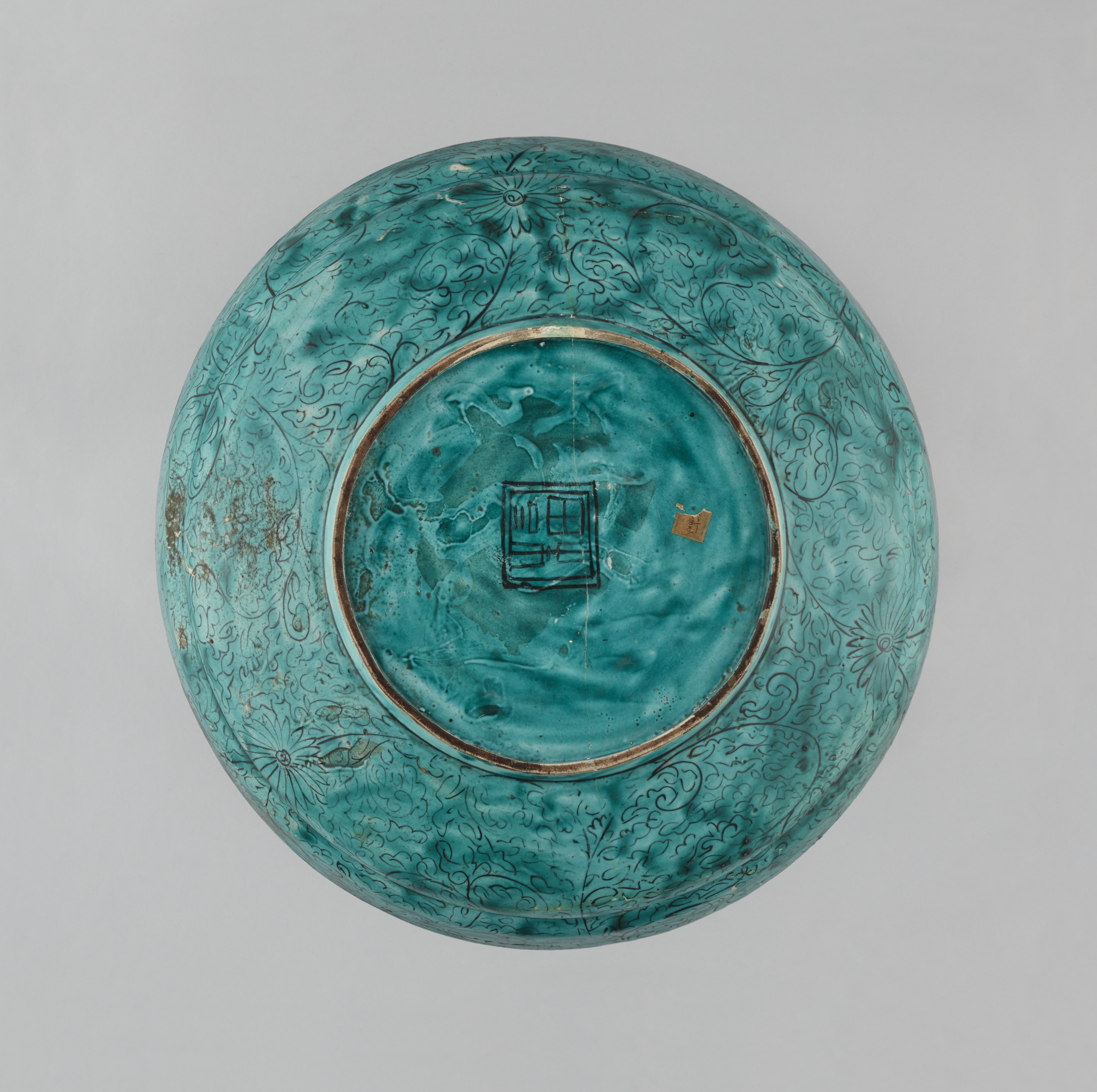
Grand plat (ōzara)
Porcelaine, Décor peint sur couverte
Plat
Marque à l'intérieur du pied : "fuku" 福
Legs : Cernuschi, Henri
M.C. 3365
Porcelain ceramics with an enamelled decoration in rich, dark colours, including yellow, green, aubergine, red, brown and blue, are termed ko-kutani. A sub-category characterised by a limited range of hues covering a large part or even the whole surface of the piece, and doubtless imitating certain types of Chinese sancai (“three colours”), is known as aote ko-Kutani or “green Kutani”. The name Kutani comes from a site in present-day Ishikawa prefecture, where a kiln had been installed in the mid 17th century by the Maeda clan, which reigned over Kaga province, with the aim of producing pieces in this style. In fact, it would appear that almost all the pieces recorded to date were produced in Arita, on the island of Kyūshū, mostly to meet domestic demand. These pieces are generally either small plates imitating Chinese porcelains made for export under Tianqi, or large dishes, sometimes utensils for the tea ceremony.
This large dish has a concentric decoration in three bands. In the middle, a branch of camellia, around which flies a butterfly, stands out against a ground of plant motifs, common in the dishes in the aote ko-Kutani style. A perfect example is the dish decorated with bunches of grapes in the Ishikawa Prefectural Museum of Art (see the museum’s database). The rim is adorned with a chrysanthemum motif. The underside has a traditional decor of chrysanthemum foliage and under the base is the mark “fuku”, on a pale yellow ground.

